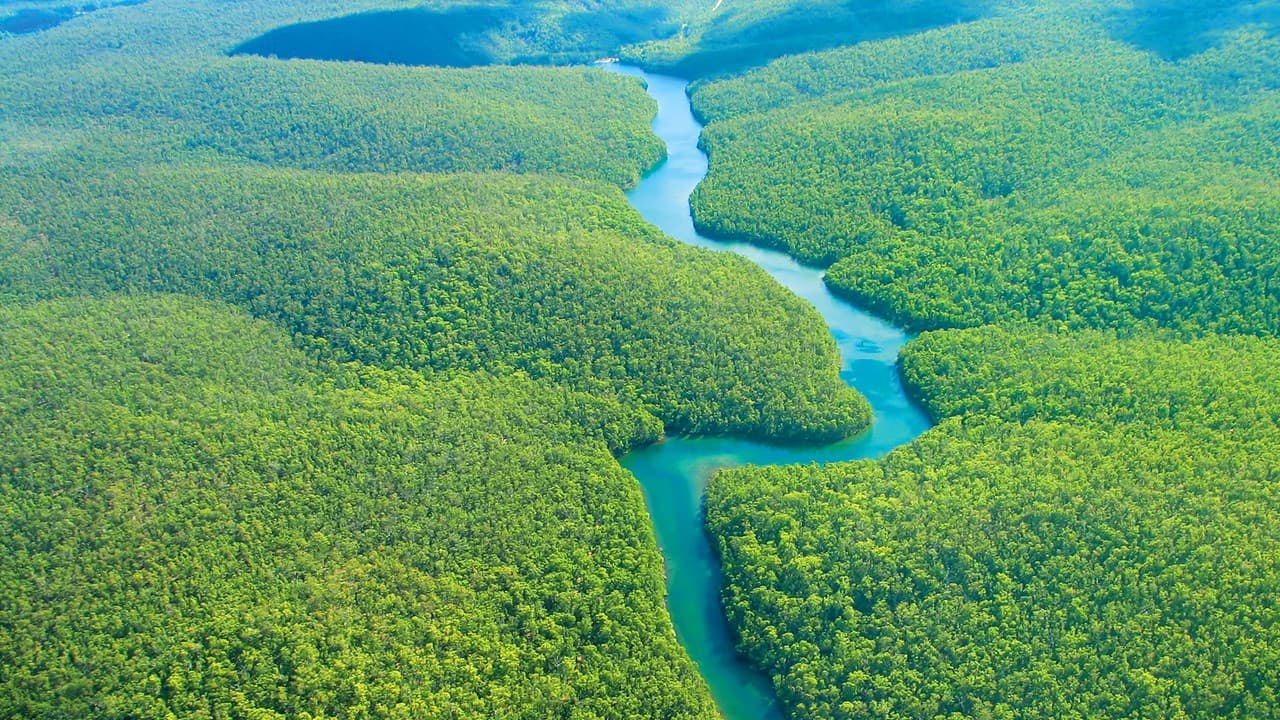
Deforestation Diminishes Amazon Basin Rainfall
Deforestation Diminishes Amazon Basin Rainfall. Continued deforestation of the Amazon rainforest could diminish the amount of rain that falls in the Amazon River basin, finds a new study. These declines in rainfall could potentially alter the region’s climate, disrupting rainforest ecosystems and impacting local economies, according to the study’s authors.
Deforestation of the Brazilian Amazon started on a large scale in the 1970s and peaked in 2004 before government restrictions curbed land clearing practices there. But deforestation has increased in other Amazonian countries in recent years, and Brazil is now facing pressure to convert more forest to pasture and crop land, according to the study’s authors. Deforestation Diminishes Amazon Basin Rainfall
New research predicts that by the middle of the century annual rainfall in the Amazon could be less than the yearly amount of rain the region receives during drought years if deforestation rates revert back to pre-2004 levels.
Essentially, drought years could become the norm for the Amazon by 2050 if deforestation rates rebound, said Dominick Spracklen, an atmospheric scientist at the University of Leeds School of Earth and Environment, United Kingdom, and lead author of the new study published today in Geophysical Research Letters, a journal of the American Geophysical Union.
This significant drop in rainfall could affect ecosystems and wildlife throughout the entire Amazon basin, which covers roughly 40 percent of South America, Spracklen said. The Amazon rainforest plays an important role in the global carbon cycle, so changes to Amazonian climate could affect global climate and weather, according to the study’s authors.
Recent droughts in the Amazon in 2005 and 2010 showed that sustained reductions in rainfall could have massive consequences for Brazil’s economy, according to Spracklen. Less rain could affect agriculture, which currently generates $15 billion a year for Brazil’s economy, and hydropower, which generates 65 percent of Brazil’s electricity, he said.
“Maintaining low deforestation rates in the Amazon is essential to ensure survival of the Amazon forest,” Spracklen said.
The tipping point
The opening of the Trans-Amazonian Highway in 1972 made the interior of the Amazon accessible for the first time, sparking a blast of forest clearing to create space for cattle ranching and agriculture. Deforestation rates in Brazil, home to two-thirds of the Amazon rainforest, accelerated throughout the following decades until reaching a peak in 2004. That year, Brazil cleared 2.7 million hectares (6.7 million acres) of forest – the equivalent of 7,400 hectares (18,300 acres) a day, according to Brazil’s National Institute for Space Research (INPE). At that rate, researchers estimated nearly half of the original forest cover would be gone by 2050.
After hearing these predictions, Brazil enacted laws to preserve the country’s remaining rainforest. Deforestation began to decline in 2005, and by 2010, forest clearing rates had dropped to about 25 percent of 2004 levels, according to INPE.
During the same time period, however, deforestation in other Amazonian countries increased, according to Spracklen. With a high global demand for increased beef and soy production, it’s likely these countries will continue clearing forest and possible Brazil will relax its forest protection laws to meet those demands, Spracklen said.
“I think one of the big environmental success stories of the past decade has been the reduction in deforestation in the Amazon, within Brazil,” Spracklen said. “But I think at the moment we’re at a kind of cusp, where there’s continued pressure within Brazil to relax some of the forest laws.”
Modeling deforestation
Forests mediate the exchange of water, energy and gases between the Earth’s surface and the atmosphere. As a result, clearing forests can affect local temperature, humidity and rainfall, but these effects can be difficult to quantify, said Luis Garcia-Carreras, a research fellow at the University of Leeds Institute for Climate and Atmospheric Science and a co-author of the new study.
Researchers use atmospheric models to simulate this process in the Amazon. Many of these simulations show an association between forest cover and rainfall, but every model is different and makes different assumptions. In the new study, researchers analyzed the results of 96 existing climate models to see if there was any consensus among them.
“We wanted to make a comprehensive assessment using all of the information that was available until now to give us the best estimate of what the impact of deforestation would be on rainfall,” Garcia-Carreras said.
Performing a meta-analysis of the 96 models, the study found that if deforestation rates return to pre-2004 levels, annual rainfall in the Amazon will decrease 8 percent by 2050 – a larger decline than would be seen with natural variability alone.
“We found a very consistent picture that deforestation is going to drive a reduction in rainfall, and that was consistent virtually across all models and all studies that we analyzed,” Garcia-Carreras said. “And we found a picture that increasing deforestation drove larger reductions in rainfall.”
Existing models suggest the current extent of deforestation should reduce rainfall, but researchers have not yet observed the decline, according to the study’s authors. Spracklen and Garcia-Carreras show through their analysis that deforestation has reduced rainfall, but the reduction is currently smaller than the natural variability in the system.
“It can’t be detected at present day because the signal, the decrease in rainfall, is small compared to the interannual variability in rainfall,” said Gordon Bonan, a climate scientist at the National Center for Atmospheric Research in Boulder, Colorado, who was not connected to the study. “But by 2050, the signal becomes larger and larger, and is detectable.
“Through their analysis, [the authors] showed that the decrease in rainfall is actually very robust across all models,” Bonan continued. “I think it is very significant for our understanding of effects of deforestation on the climate of Amazonia.”












